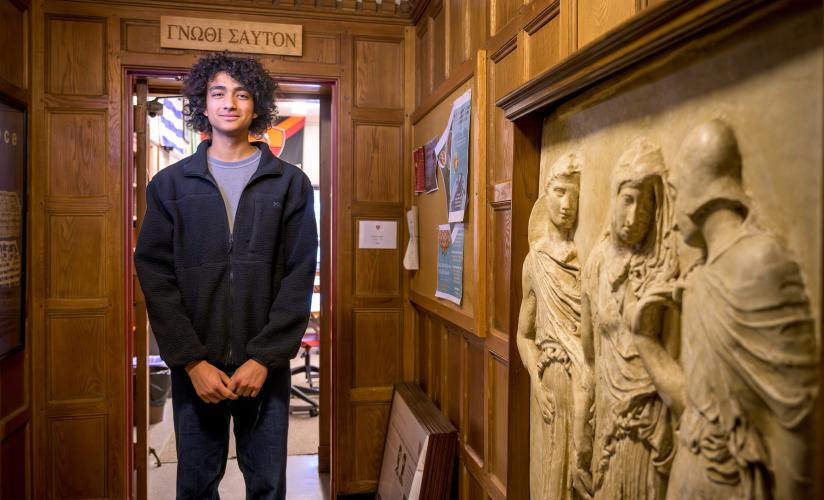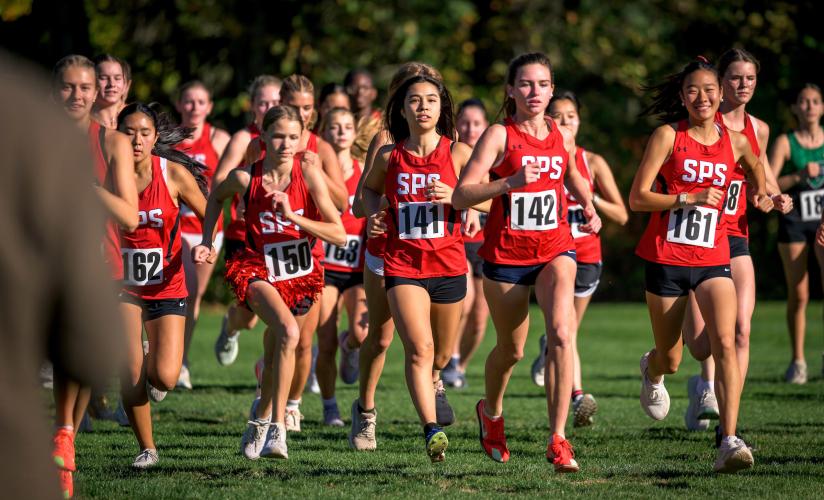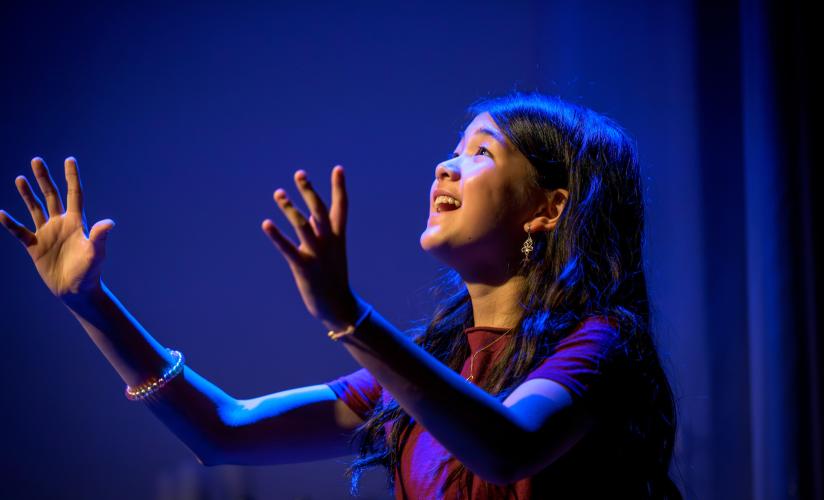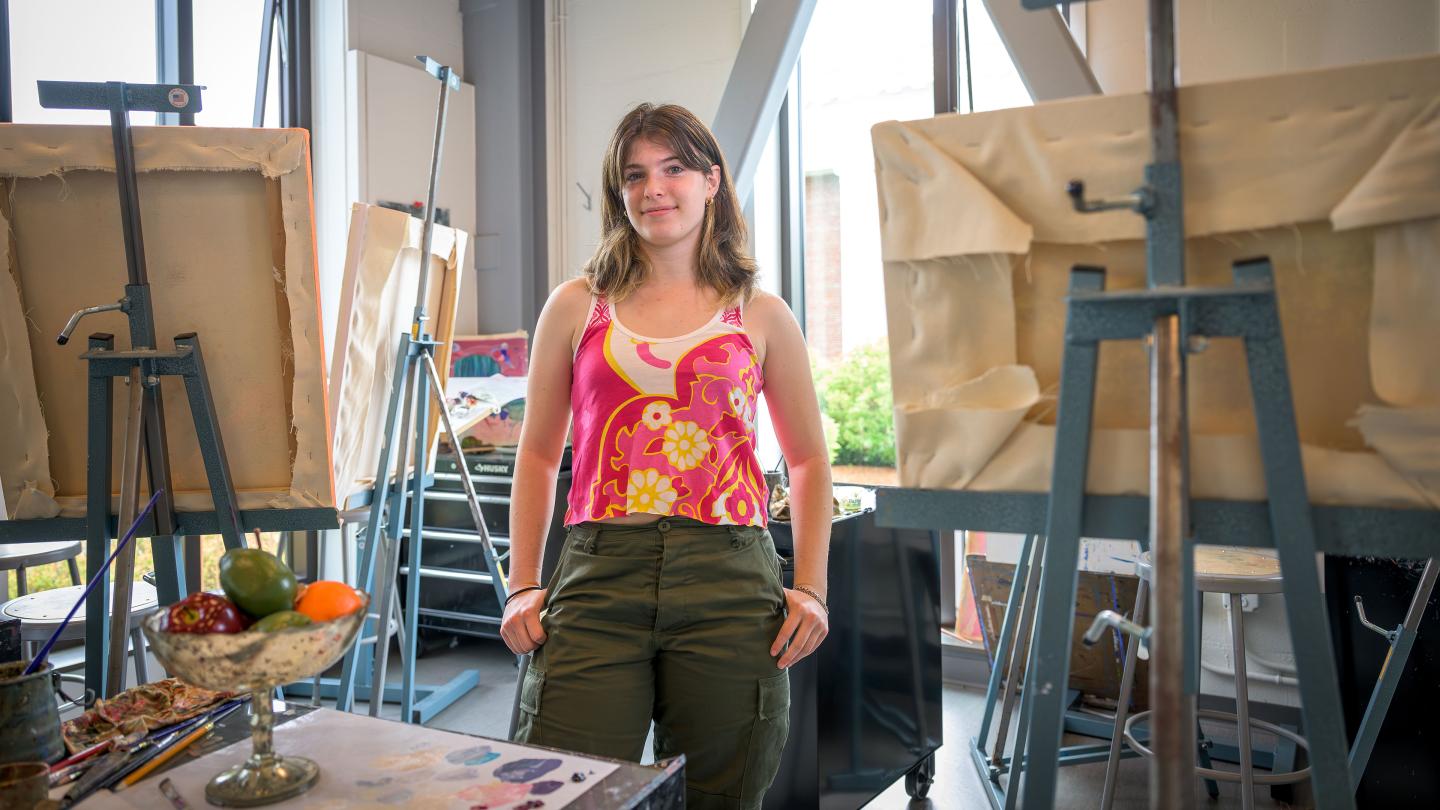

Student artists in the Form of 2023 contribute works to the SPS Permanent Collection.
BY IAN ALDRICH
If you’ve found yourself in the Lindsay Center for Mathematics and Science during the month of June, you might have taken notice of something new in the building. It has nothing to do with the innovative “green” technology that powers much of the Center or some sparkling piece of scientific equipment. In fact, it has nothing do with science or math at all.
And that is kind of the point.
On a first floor wall near the main staircase hangs a three-part painting by Samantha Seeley ’23. A 17-year-old Massachusetts native who’s attending the Rhode Island School of Design (RISD) in the fall, Seeley and Ella Raniolo ’23 each made original art pieces as part of their work in AP Portfolio Drawing and Painting. Both students then donated their creations to the School’s Permanent Collection, which comprises original artwork by students and alumni.
Fine Arts Teacher and Arts Department Head Leigh Kaulbach, who oversaw the two projects along with Arts Teacher Brian Schroyer, says the idea was born in part out of a desire to showcase more student artwork around the grounds.
Noting that the Art Department had exhausted its bank of existing work, Kaulbach says, “We knew it was time to open the doors back up to gathering outstanding student and alumni works and we felt this was a great opportunity.” At the Lindsay Center, the alcove across from the Foucault pendulum just past the main entrance presented the ideal space to showcase a large student piece. After speaking with Science Department Head Julie Cepiel and Math Department Head Parker Chase about the location, Kaulbach and Schroyer agreed a digital project would work best to fill the space — and that Seeley was just the artist to create it.
Seeley’s finished piece is a digital triptych that Kaulbach says “integrates a scene of the natural world with imagery of the physical body rendered in a highly illustrative, digital style, which mirrors the scientific and technological subject matter studied in the Lindsay building.” Raniolo, meanwhile, took inspiration from the great blue heron, “Hank,” who is frequently found fishing just past the dam below Library Pond. It’s a spot that’s visible through the windows in the Friedman Community Center’s Raffini Commons, which is where Raniolo’s drawing will ultimately hang.
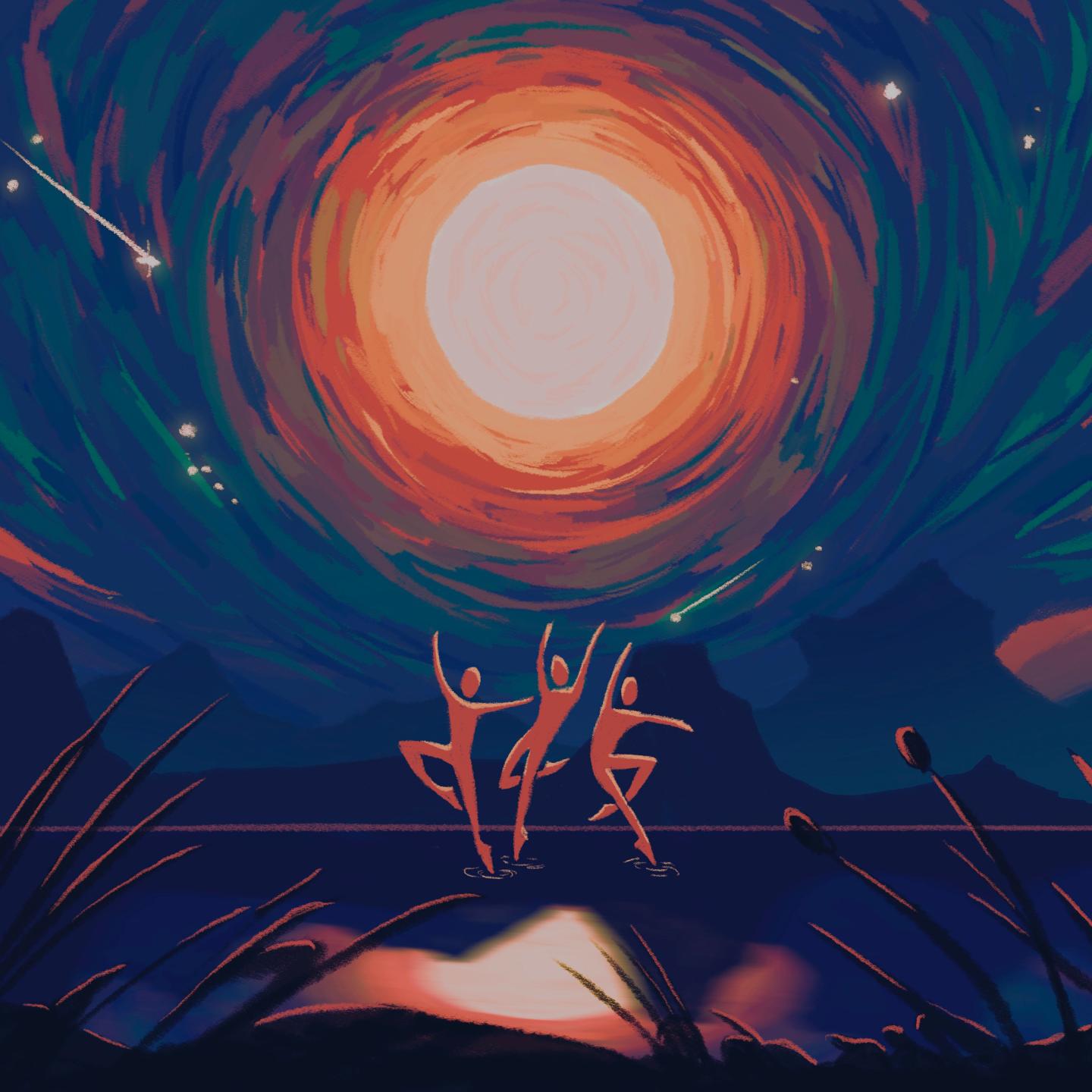
A detail from the center panel of Samantha Seeley’s digital triptych, which hangs in the entryway of the Lindsay Center for Mathematics and Science.
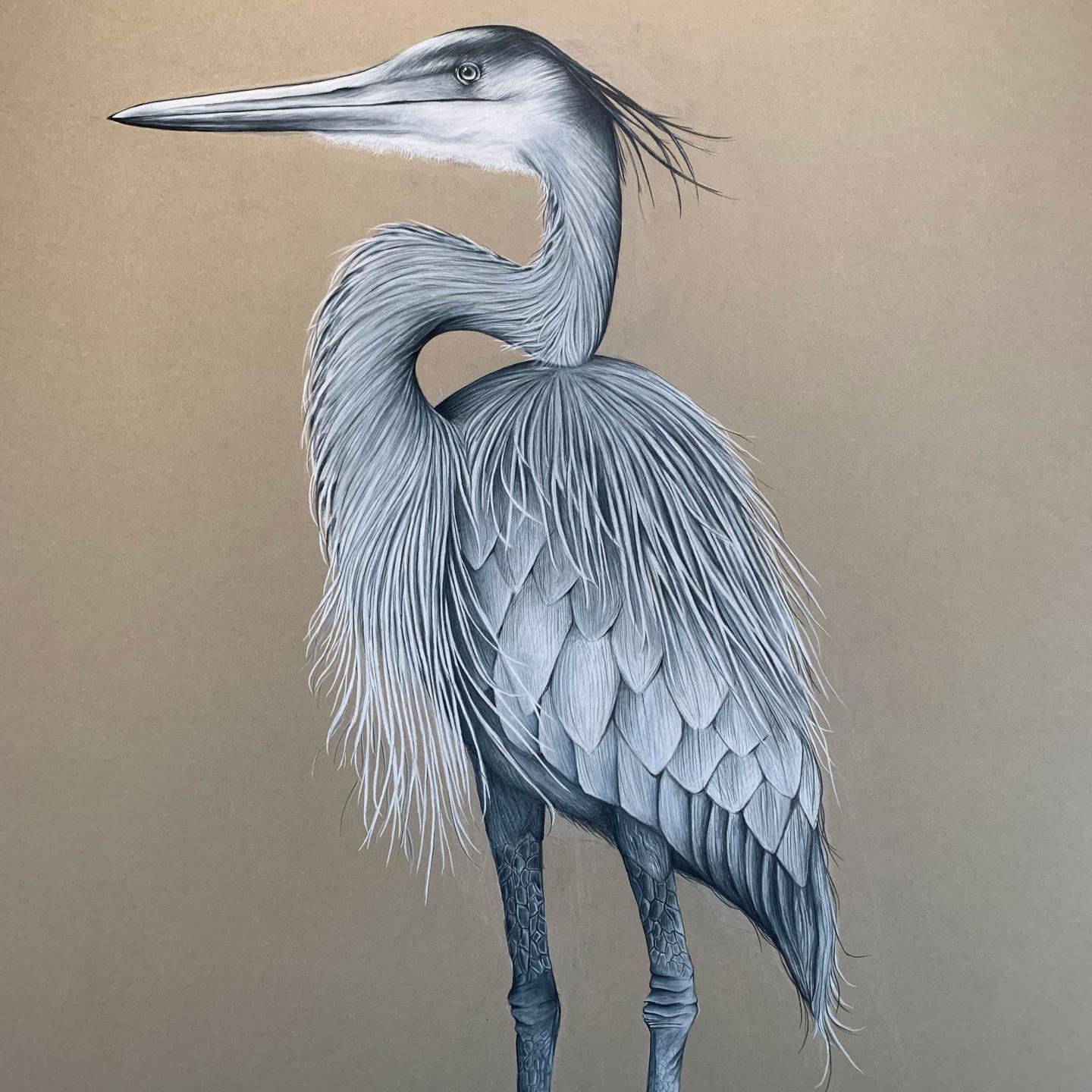
A closeup of Ella Raniolo’s piece, “The Great Blue Heron,” drawn in white, grey and black pencil on tone matboard.
For Seeley, the chance to make something for the Lindsay Center was imbued with some irony. “I’m not a math or science person,” she says with a laugh. “But I know the building and I know the anxiety that can come to a person like me when they have to step into that building. I wanted to create something calm and colorful.”
Seeley created her untitled piece on her iPad using the software program Procreate. With its long brush strokes and central characters suspended seemingly in mid-dance, it evokes a sense of movement and sway that, given Seeley’s background, isn’t surprising.
Seeley came to SPS in 2019 in part to join the St. Paul’s School Ballet Company. But her informal notebook doodles were soon getting as much attention from her peers as her dance performances. “They’d say, that’s so cool—are you taking an art class?” Seeley recalls.
In her free time she watched online drawing tutorials and devoured art books that delved deeper into the work of her favorite animated films. Then, during Winter Term of her Fifth Form year, Seeley took her first St. Paul’s art class, Computer Graphics: Art with Computers. Suddenly, she saw the opportunity to create whole new scenes and worlds from scratch. “It got me thinking that I wanted to go to art school,” Seeley says. “I became really passionate about it.”
Like dance, Seeley says the allure of making art lies in the subtle way it can communicate to the viewer. There’s what you see that’s immediately in front of you, she says, and then there’s what comes to light when you peer a little closer.
“It’s not always super exact or direct,” Seeley says. “It’s not like writing a sentence. But it is communicative. It’s presenting an idea and then allowing someone else to take it however they want.”
Seeley’s piece is likely to find its long-term home in a different location, but wherever it lands, it’s a welcome addition to the School’s permanent collection — one that deftly leaps the divide between science and art.

